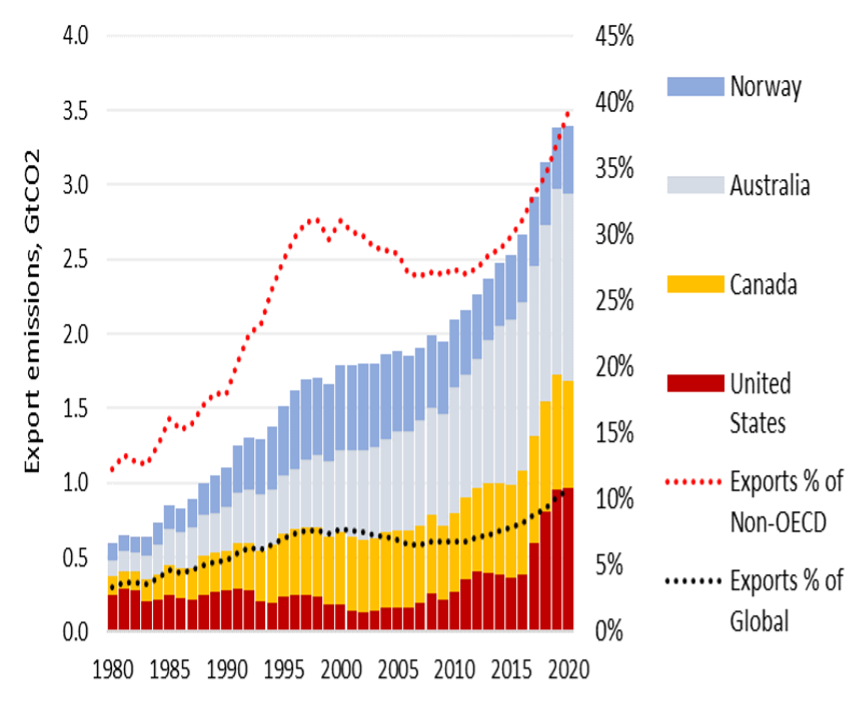Increase In Export Emissions
|
Despite commitments to reduce their domestic emission levels Australia, Canada, Norway and the USA have increased their level of fossil fuel exports, and therefore the CO2 emissions related to the eventual combustion of those fossil fuels. These export-related emissions of these countries from 1980 to 2020 rose from 0.5 GtCO2 in 1980 to 3.4 GtCO2 in 2020 (Figure 1a). This equates to a 4.4% average annual growth in export emissions from these countries, compared to 0% growth in reported domestic territorial emissions over the same period. The value of Australia’s fossil fuel exports in 2022–2023 alone was around AUD $233 billion dollars – 65 times the federal annual expenditure on meeting Australia’s net zero targets.
The export emissions of these countries equate to over 11% of global emissions in 2020 from fossil fuel combustion, and almost 40% of emissions from non-OECD countries (excluding China).
Key Recommendations
• States must accept that action on climate change must include reducing their direct domestic
emissions as well as the emissions associated with their fossil fuel exports.
• Lack of consideration of the impact of export emissions is a significant roadblock to
climate action.
• National (and ambitious) emissions targets should include targets to reduce export emissions
and domestic emissions.
• The COP process needs to fully acknowledge the need for a plan to phase out all fossil fuels,
including reductions in exports.
• States at COP should adopt an ‘export net zero’ target in addition to a domestic emissions
reduction target.
